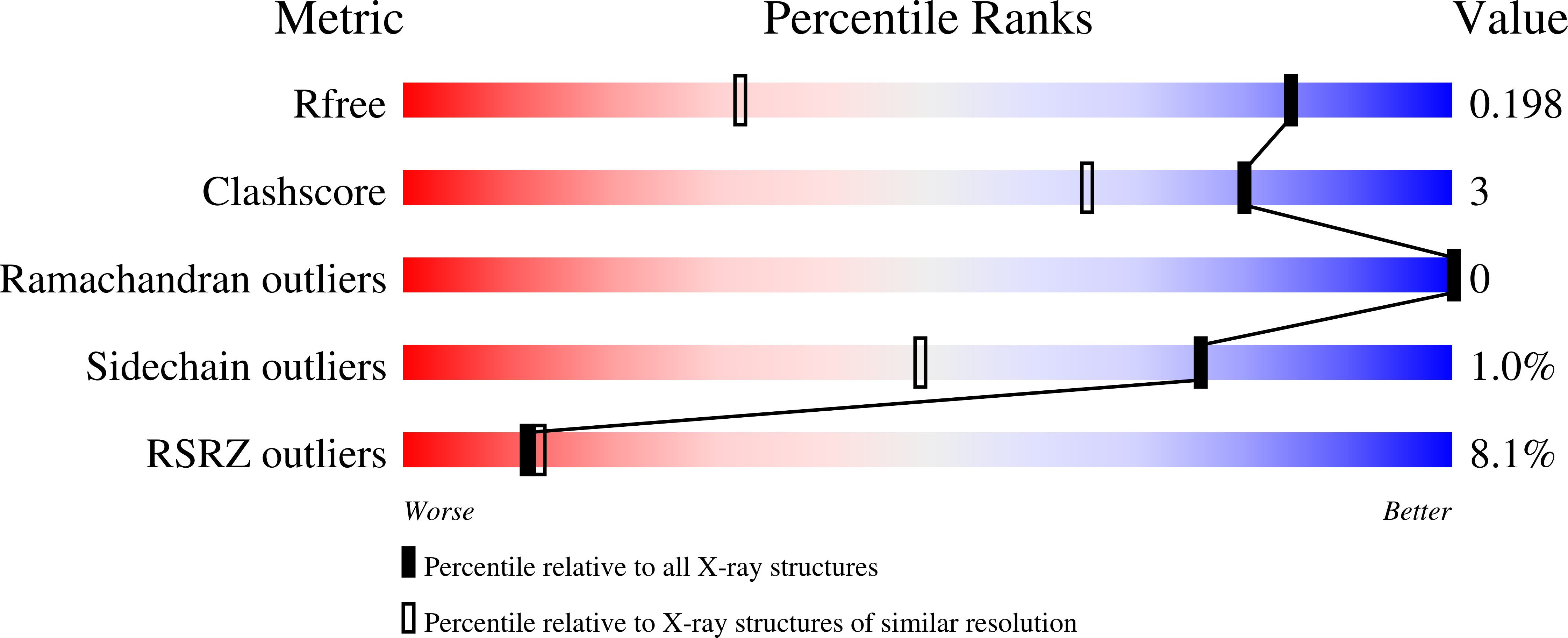Conformational Mobility in the Active Site of a Heme Peroxidase.
Badyal, S.K., Joyce, M.G., Sharp, K.H., Seward, H.E., Mewies, M., Basran, J., Macdonald, I.K., Moody, P.C.E., Raven, E.L.(2006) J Biological Chem 281: 24512-24520
- PubMed: 16762924
- DOI: https://doi.org/10.1074/jbc.M602602200
- Primary Citation of Related Structures:
2GGN, 2GHC, 2GHD, 2GHE, 2GHH, 2GHK - PubMed Abstract:
Conformational mobility of the distal histidine residue has been implicated for several different heme peroxidase enzymes, but unambiguous structural evidence is not available. In this work, we present mechanistic, spectroscopic, and structural evidence for peroxide- and ligand-induced conformational mobility of the distal histidine residue (His-42) in a site-directed variant of ascorbate peroxidase (W41A). In this variant, His-42 binds "on" to the heme in the oxidized form, duplicating the active site structure of the cytochromes b but, in contrast to the cytochromes b, is able to swing "off" the iron during catalysis. This conformational flexibility between the on and off forms is fully reversible and is used as a means to overcome the inherently unreactive nature of the on form toward peroxide, so that essentially complete catalytic activity is maintained. Contrary to the widely adopted view of heme enzyme catalysis, these data indicate that strong coordination of the distal histidine to the heme iron does not automatically undermine catalytic activity. The data add a new dimension to our wider appreciation of structure/activity correlations in other heme enzymes.
Organizational Affiliation:
Department of Chemistry, Henry Wellcome Building, University of Leicester, University Road, Leicester LE1 7RH, United Kingdom.





















